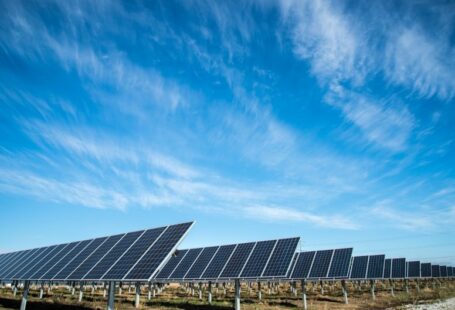In recent years, Indonesia has experienced a significant surge in solar energy investments, marking a pivotal shift towards renewable energy sources in the country. With its abundant sunlight and a growing demand for clean energy, Indonesia has become an attractive destination for solar energy projects and investments. This article delves into the factors driving this surge and the implications for Indonesia’s energy landscape.
Solar Energy Potential in Indonesia
Indonesia, a country located near the equator, is blessed with abundant sunlight throughout the year, making it an ideal location for solar energy production. The country’s geographic location provides it with ample solar resources that can be harnessed to generate electricity, reducing its reliance on fossil fuels and mitigating the impact of climate change. As the world increasingly shifts towards renewable energy sources, Indonesia is poised to capitalize on its solar energy potential.
Government Support and Policies
The Indonesian government has been proactive in promoting renewable energy development, including solar power. Various policies and incentives have been put in place to encourage investments in the sector, such as feed-in tariffs, tax incentives, and streamlined permitting processes. These measures have attracted both domestic and international investors looking to capitalize on the growing demand for clean energy in Indonesia.
Private Sector Initiatives
In addition to government support, the private sector has also played a significant role in driving solar energy investments in Indonesia. Companies ranging from energy providers to tech giants have been investing in solar projects across the country, recognizing the long-term benefits of transitioning towards renewable energy sources. This influx of private sector investments has not only accelerated the growth of the solar energy sector in Indonesia but also created new job opportunities and spurred economic development.
Challenges and Opportunities
While the surge in solar energy investments in Indonesia is promising, there are still challenges that need to be addressed to ensure the sustainable growth of the sector. One of the main challenges is the lack of grid infrastructure in remote areas, hindering the integration of solar power into the national grid. Additionally, regulatory uncertainties and land acquisition issues have posed obstacles for some solar projects.
Despite these challenges, there are ample opportunities for further expansion of solar energy in Indonesia. The decreasing cost of solar technology, advancements in energy storage solutions, and the increasing demand for clean energy present a favorable environment for continued investments in the sector. By overcoming existing challenges and leveraging these opportunities, Indonesia can further solidify its position as a key player in the global solar energy market.
Implications for Indonesia’s Energy Landscape
The surge in solar energy investments in Indonesia is expected to have a transformative impact on the country’s energy landscape. By diversifying its energy sources and reducing its dependence on fossil fuels, Indonesia can improve energy security, reduce greenhouse gas emissions, and create a more sustainable energy system for the future. The shift towards renewable energy sources like solar power aligns with global efforts to combat climate change and transition towards a low-carbon economy.
In conclusion, the surge in solar energy investments in Indonesia marks a significant milestone in the country’s transition towards clean and sustainable energy sources. With its abundant solar resources, supportive government policies, and growing private sector involvement, Indonesia is well-positioned to capitalize on the opportunities presented by solar energy. By addressing existing challenges and seizing upon emerging opportunities, Indonesia can pave the way for a greener and more resilient energy future.





